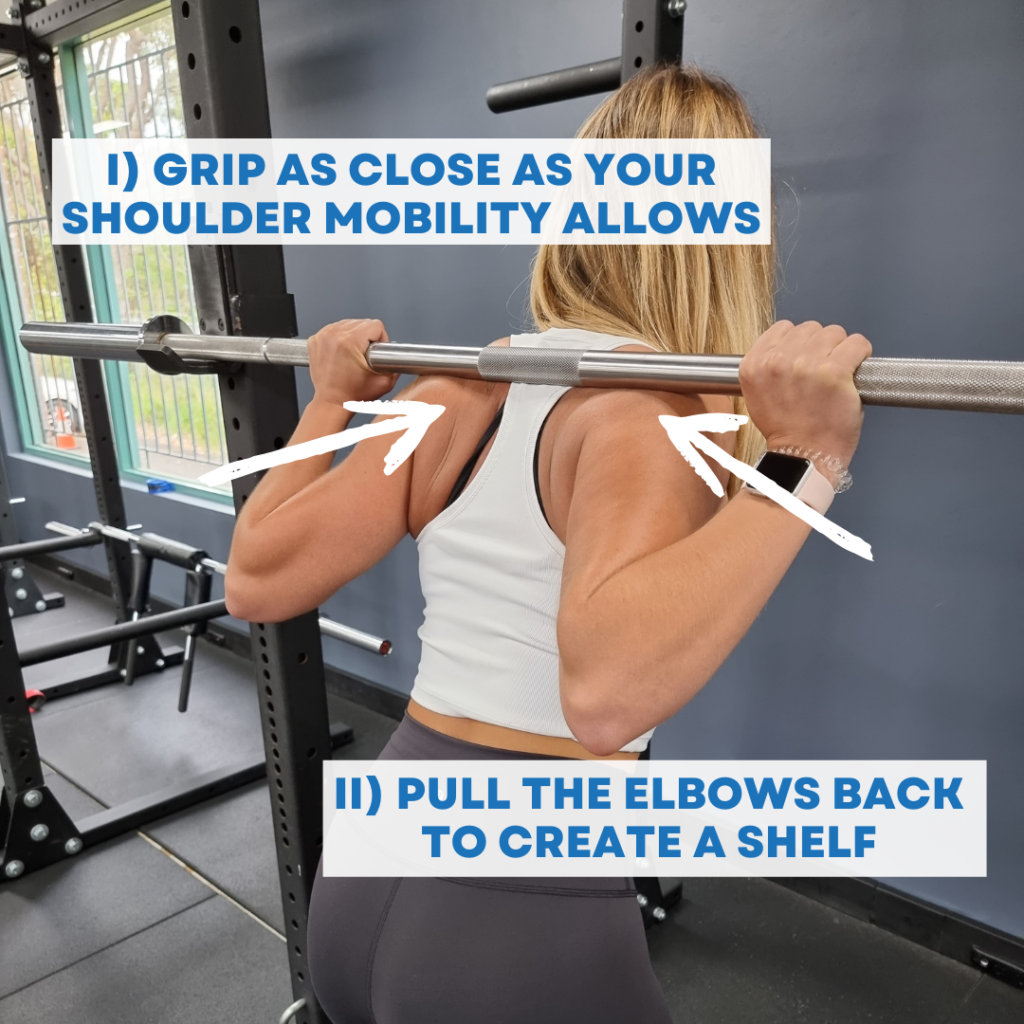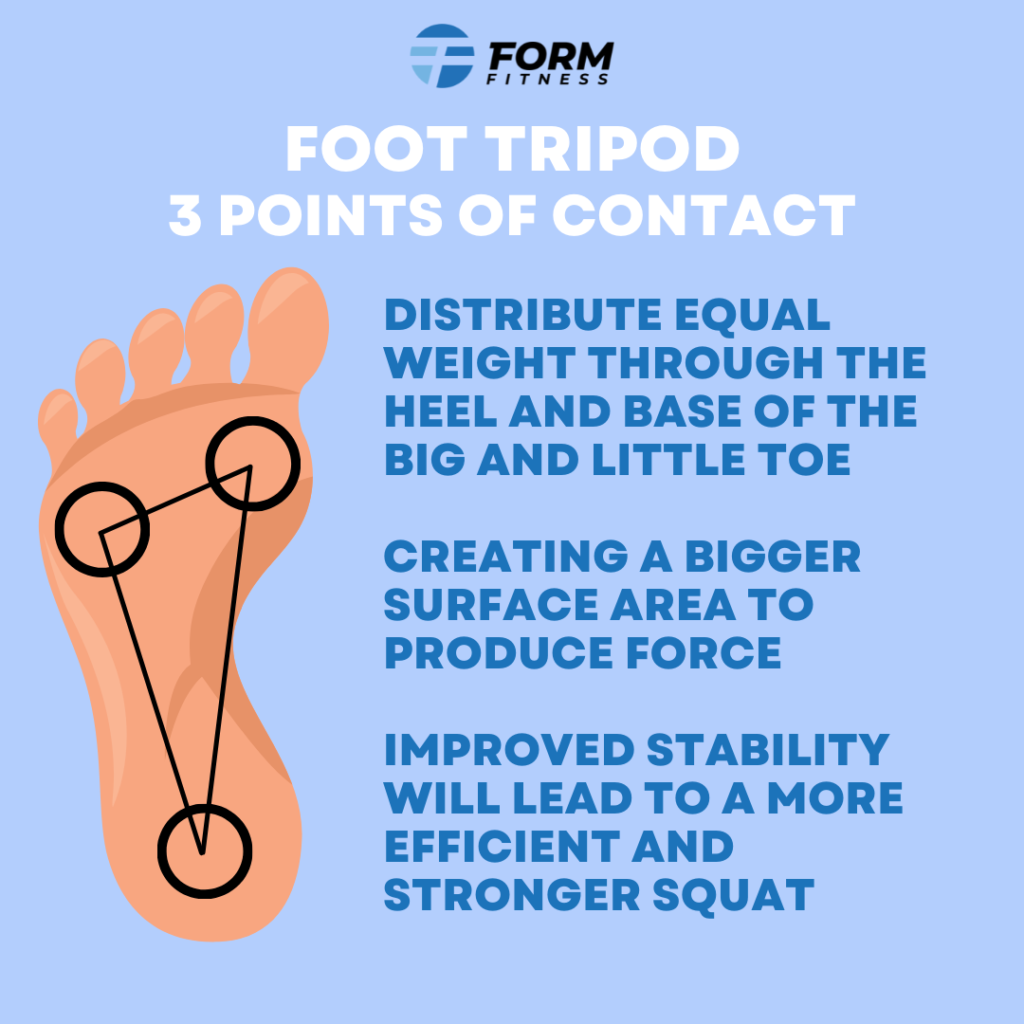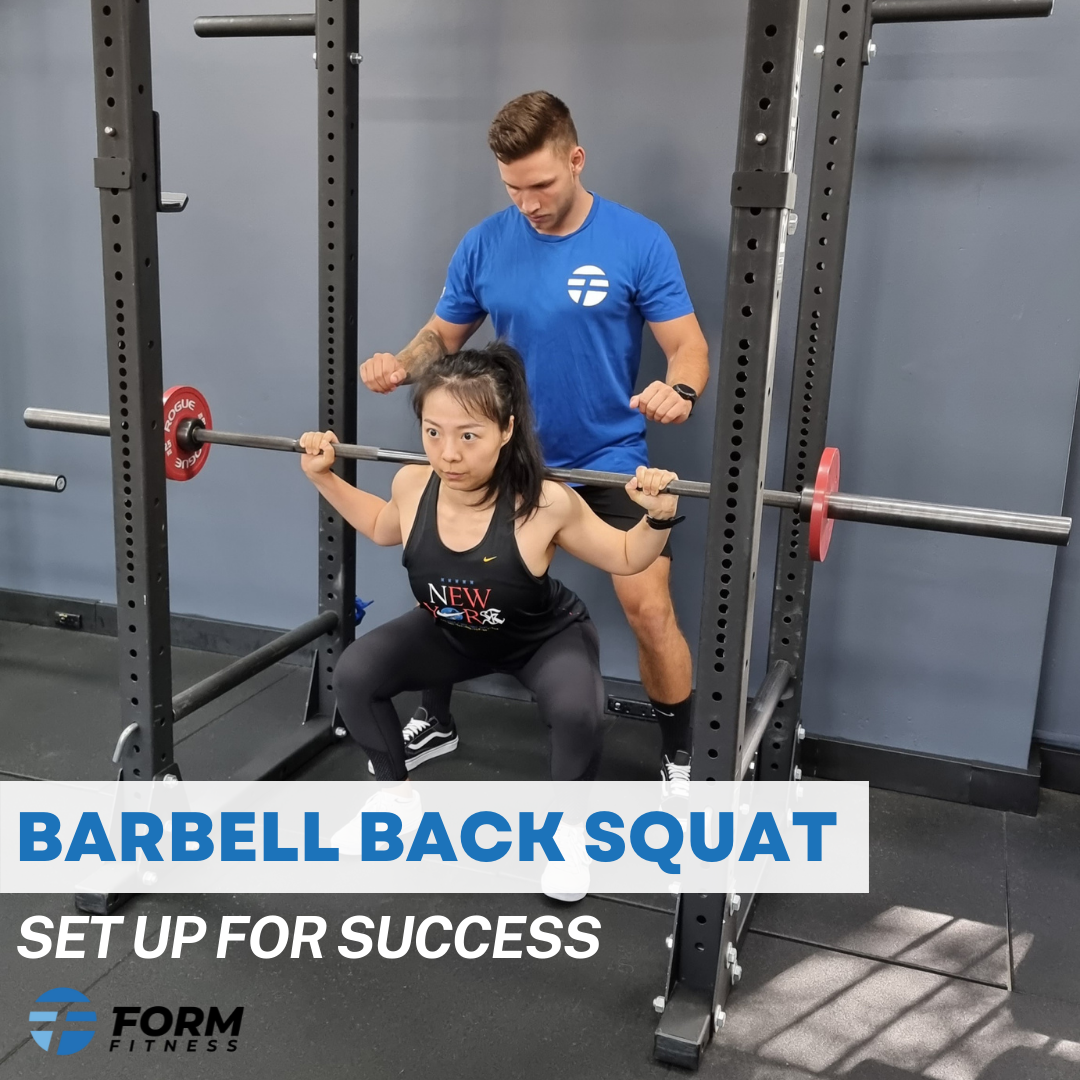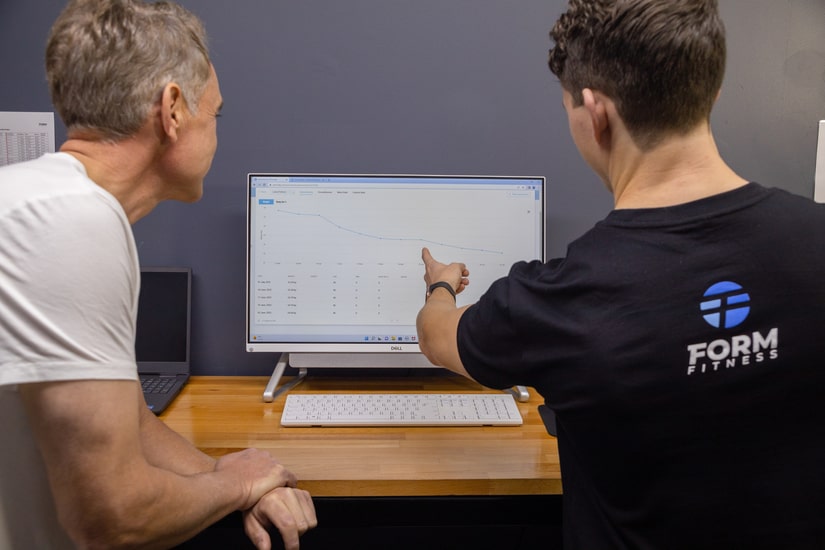The barbell back squat is a great compound exercise. When executed with good form, the barbell squat is a great exercise to help build muscle and strength in the legs, trunk and back.
Let’s take a look at my 3 top ‘set up’ tips when performing a barbell squat.

1 – Barbell position and tightness
There are 2 types of positions that the barbell can sit on the back. The position will be slightly different for each individual and the type of squat being performed.
– High bar sits on top of the traps
– Low bar sits slightly lower, on the rear delts.
In either high or low bar squats, the bar should never sit directly on bone*
i – Place your hands on the bar and grip the bar as close as your shoulder mobility will allow. Gripping the bar closer can assist in creating a tight upper back.
ii – Pull your elbows back to create a ‘shelf’ for the bar to sit on. The upper back should now be tight.

2 – Feet and weight distribution
Your feet play an important role in keeping you stable.
Imagine gripping the floor with your feet.
Think about keeping equal pressure through the heel and the base of the big and little toe.
This will create a bigger surface area and add more stability.

3 – Bracing
Bracing is the ability to keep tension throughout your torso. Proper bracing helps keep your spine stable and in a neutral position.
If we lose spinal integrity, we increase the risk of injury.
How to brace:
i – Take a breath in through the mouth and expand the belly.
ii – Draw the rib cage down
iii – Stiffen the trunk
There are many cues to think about when performing a barbell squat, though implementing these 3 set up tips will be a good start to squatting with great form.
If you’d like to improve on your barbell squat or you’d like some guidance with your strength training technique, contact us on the button below 🙂






